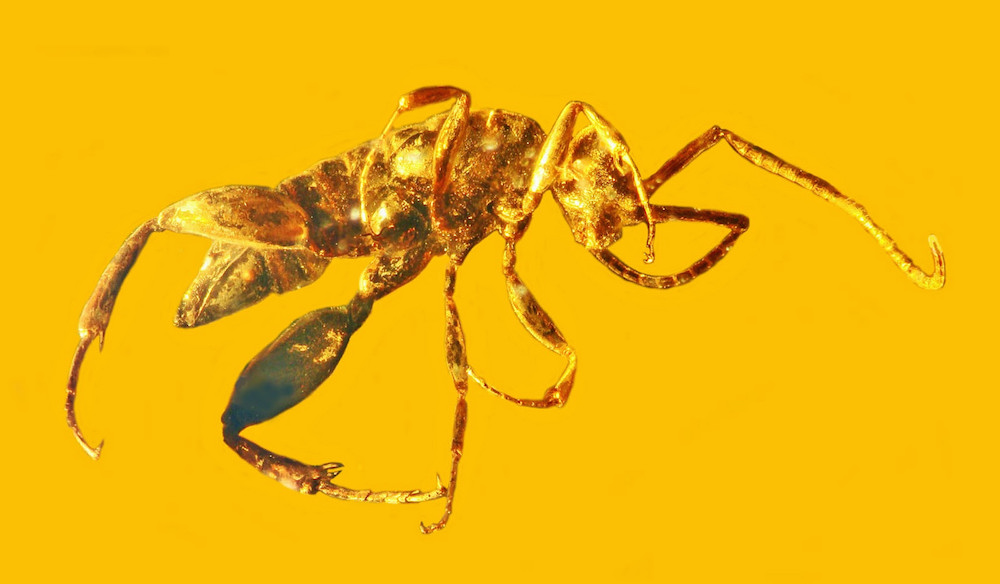
Scientists have recently discovered a mysterious, 100-million-year-old insect trapped in amber — and as far as anyone knows, it is unlike any other insect that has ever lived on Earth.
The weird insect, called Aptenoperissus burmanicus, is a mash-up of many other creatures: It has the face of a wasp but no wings, the legs of a grasshopper, the antenna of an ant and the body of a cockroach.
"When I first looked at this insect, I had no idea what it was," study co-author George Poinar Jr., a professor emeritus at Oregon State University, said in a statement. "You could see it's tough and robust, and could give a painful sting. We ultimately had to create a new family for it, because it just didn't fit anywhere else. And when it died out, this created an evolutionary dead end for that family," added Poinar, who is one of the world's leading experts on fossils preserved in amber. [In Photos: Amber Preserves Cretaceous Lizards]
Trapped in amber
The stunningly preserved female specimen was found in the Hukawng Valley in Myanmar, encased in amber. Scientists working in the region have found hundreds of other well-preserved creatures trapped in amber, all from the Cretaceous Period.
When they discovered A. burmanicus, Poinar and his colleagues spoke with several experts, all of whom were stumped by the insect's odd combination of features.
"We had various researchers and reviewers, with different backgrounds, looking at this fossil through their own window of experience, and many of them saw something different," Poinar said.
Eventually, the researchers created the new family classification, Aptenoperissidae, within the order Hymenoptera. As such, it is only distantly related to other members of the order, such as bees and wasps. It is now the only known species in that family, the researchers reported in a forthcoming issue of the journal Cretaceous Research.
Get the world’s most fascinating discoveries delivered straight to your inbox.
"If you focused on its strong hind legs, you could call it a grasshopper. The antenna looked like an ant, the thick abdomen more like a cockroach. But the face looked mostly like a wasp, and we finally decided it had to be some kind of Hymenoptera," Poinar said.
Though the researchers know relatively little about this odd creature's lifestyle, they said it probably crawled along the ground to lay its eggs, and used its stinger to hunt grubs. It's not clear exactly why the bug went extinct, though its inability to fly could be a potential reason, the researchers said.
Either way, when the creature died out, it became an evolutionary dead end, as there are no known close relatives, either past or present, for this mysterious insect.
Original article on Live Science.

Tia is the managing editor and was previously a senior writer for Live Science. Her work has appeared in Scientific American, Wired.com and other outlets. She holds a master's degree in bioengineering from the University of Washington, a graduate certificate in science writing from UC Santa Cruz and a bachelor's degree in mechanical engineering from the University of Texas at Austin. Tia was part of a team at the Milwaukee Journal Sentinel that published the Empty Cradles series on preterm births, which won multiple awards, including the 2012 Casey Medal for Meritorious Journalism.
